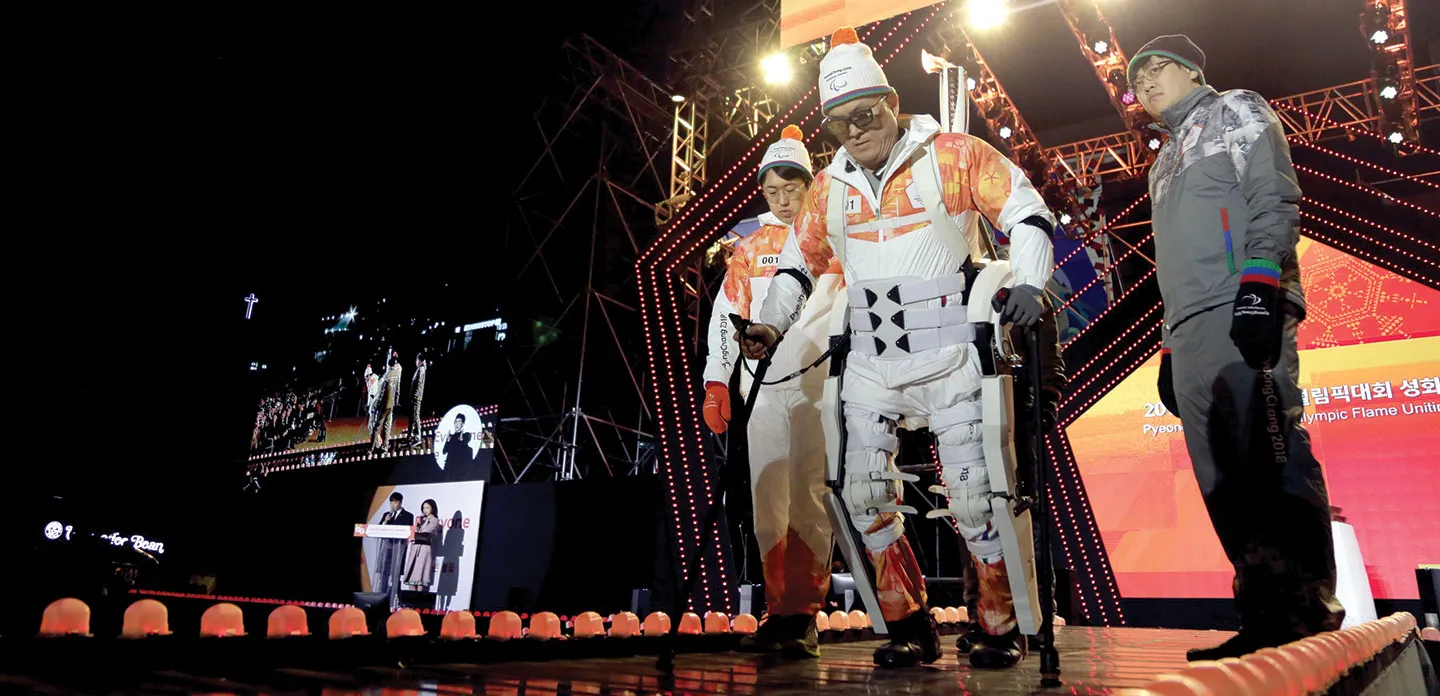DESIGNING CUSTOM-FITTING WEARABLE ROBOTS QUICKLY
With SOLIDWORKS design tools, Angel Robotics has been able to quickly develop its robotic products, despite the fact that the products must be custom-sized for each specific user. The Korean startup leverages SOLIDWORKS design configuration capabilities, which automate the creation of design variations from a single base design and 3D scan data of new customers, to custom-fit its products.
“In the case of our wearable robot products, the brace parts must be customized for every single user,” Kong stresses. “Therefore, the ability to make rapid design modifications is mandatory for us. SOLIDWORKS is definitely the fastest and the most convenient design tool, which enables us to quickly modify the braces by adapting the design to the 3D scanned model of users. SOLIDWORKS provides an intuitive graphical user interface that allows us to design, check, and verify a design within a few hours. That’s why we use SOLIDWORKS: It allows us to design everything very quickly.”
Recently, Angel Robotics began developing wearable robots for children. “The importance of the rapid design and manufacturing of the brace part becomes even more vital in the case of a child’s robot, because the brace part must be changed frequently as the child grows up,” Kong emphasized.
SIMULATION SHORTENS LENGTH OF PROTOTYPING, USER TRIALS
Instead of creating physical mock-ups of parts for performance testing, Angel Robotics saves time and money by using integrated SOLIDWORKS Simulation finite element analysis (FEA) software to virtually simulate part stiffness and strength, and SOLIDWORKS dynamic motion tools to check for component interferences within assemblies. In addition to saving time and reducing costs during development, virtually and visually prototyping parts helps to minimize trial-and-error iterations during performance and safety testing, which are requirements for gaining the government regulatory approvals needed to market and sell robotic systems in various countries.
“SOLIDWORKS Simulation helped us minimize trial and error in testing the safety of our robots through finite element analysis,” notes Senior Designer Byeonghun Na. “Making physical mock-ups is very time-consuming. Therefore, we use SOLIDWORKS to visually prototype parts before we physically assemble them.”
FACILITATING MANUFACTURING VIA 3D PRINTING
Custom-fitting wearable robotics demands not only robust design capabilities for rapidly adapting the design for each specific person but also a cost-effective means for manufacturing single-shot parts. Here again, Angel Robotics utilizes SOLIDWORKS design data to quickly create plastic parts, using additive manufacturing, on its Stratasys Fortus 3D printer.
“SOLIDWORKS provides an intuitive and easy interface for utilizing 3D printers, which makes the overall manufacturing process simple and fast,” Kong says. “SOLIDWORKS is very powerful in the sense that it allows all the users to utilize such complicated and professional functions without consuming too much time and energy. The easy and intuitive user interface is the most powerful feature of SOLIDWORKS.”
